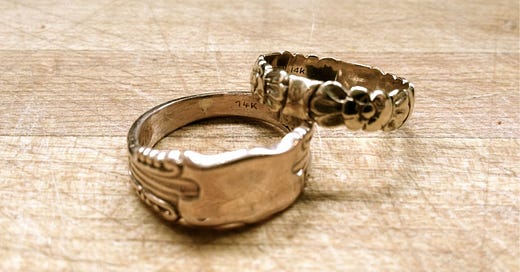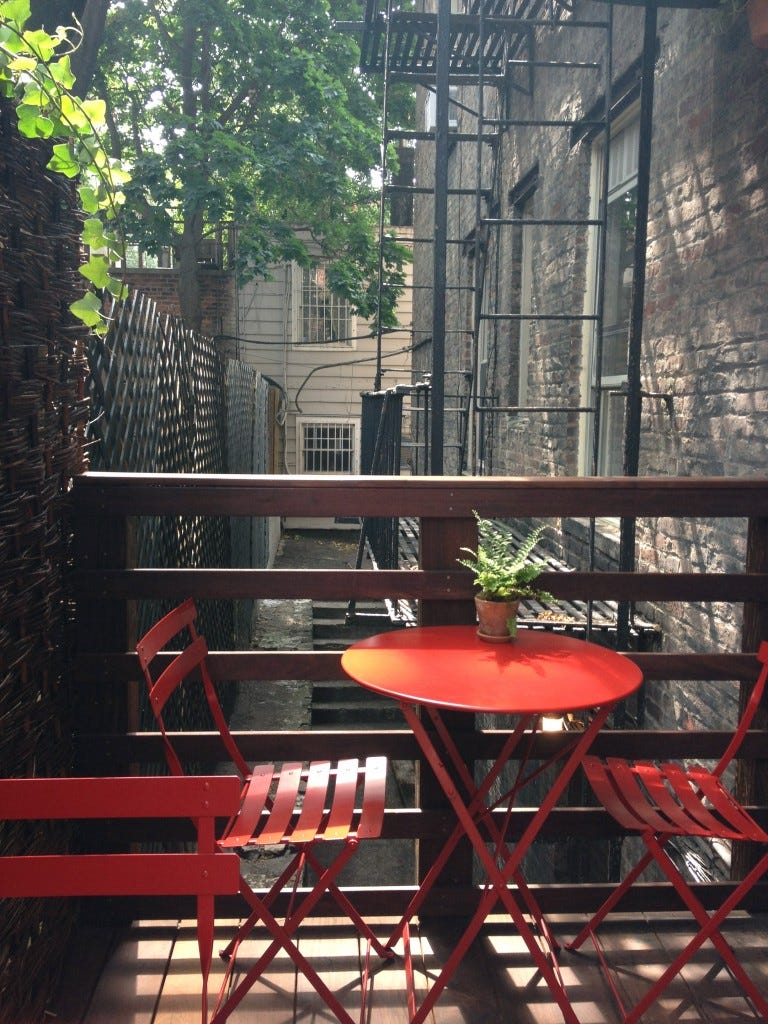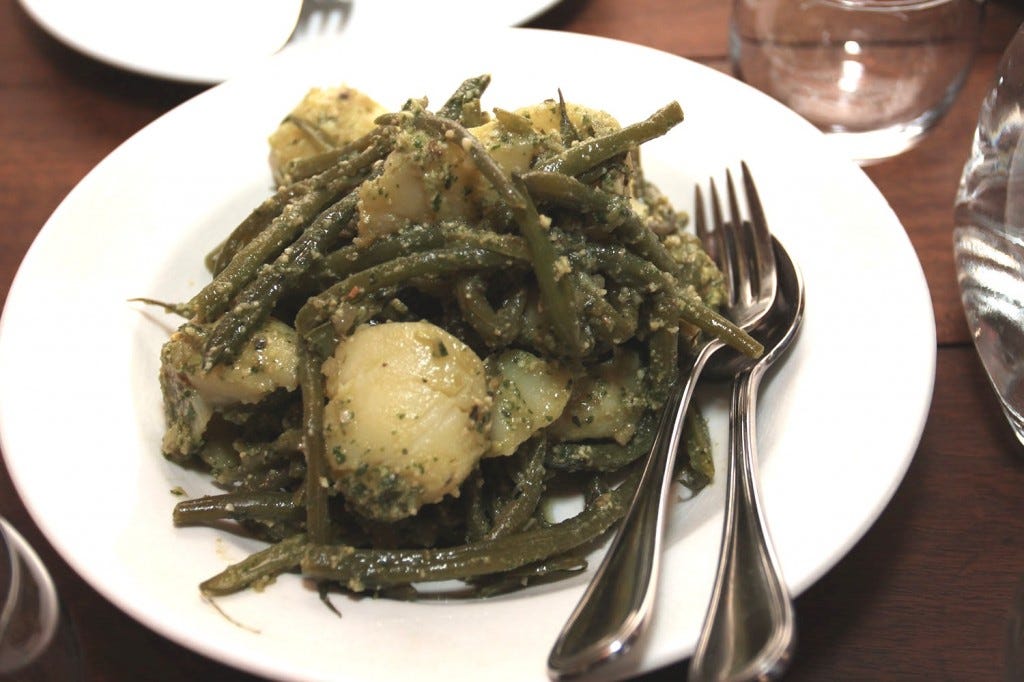If I get married, I want to be very married. - Audrey Hepburn
Last week, Susan and I celebrated the tenth anniversary of our second marriage to each other. (This does not include our 2002 civil union in Vermont, or our 2003 unofficial union in Connecticut, presided over by an Irish convert rabbi and the world’s stiffest Unitarian minister. Or our 2008 civil union in the backyard, after Connecticut made it legal. And our 2009 wedding in front of our fireplace, again, after Connecticut made it legal.)
A decade ago, though, it was my mother’s idea, which was extraordinary because she couldn’t manage to let us know whether she was coming to our 2003 event until two days before. But this was different.
“It’s extremely important,” my mother said, “that you get married in New York.”
“But we’re already married in Connecticut–” I said.
“But that’s not New York. Only New York is New York,” she said.
Wobbly logic, but I get it: New York is home. It’s her home; she’s never lived anywhere else. She’s like that Saul Steinberg poster come to life. Stuff that happens outside New York is vague and slightly unreal to her. In her opinion, only New York is legitimate and although Susan and I were married in Connecticut, my mother didn’t think it counted.
But getting married a bunch of times to the same person can pose some problems after a while. Do you celebrate all the anniversaries, or just one? And how do you know which one? Is it bad form to accidentally forget one of them? Does celebrating five anniversaries if you have six mean that something’s missing from the relationship? Do people who traveled far and wide for the big one have to do the same for all of them? When does it begin to get onerous, for all parties? It can feel fraught, but in our zeal to partake of the singular most culturally traditional act a completely in-love couple can possibly engage in, we decided to just keep racking up the dates, and hope that our spotty memories are up to the task. (So far, so good.)
My mother is like that Saul Steinberg poster come to life. Stuff that happens outside New York is vague and slightly unreal to her.
Ours has been a marriage of love and a marriage of words and a marriage of food; we’ve merged styles and flavors and pets and libraries and families and culinary sensibilities, and have totally changed the way we think about ourselves both individually, and as a couple. When we met, I brought culinary excess to the table, and a belief that everything destined for a plate had to be a feast, and that celebrations always meant fancy (which also sometimes meant ridiculous, and almost always tall). Susan brought the exact opposite: her food was quieter, and often served on buttered toast. It was celebratory too, but in an understated, peaceful, and far less shoehorned-into-submission way.
What I’ve re-learned about sustenance is thanks to Susan; that’s been her wedding gift to me, again and again.
That unofficial union back in 2003, the year after my father died: neither of us is religious — although I was raised in a secular Jewish home and Susan in a devoutly Catholic one — but we had these two interesting-if-odd members of the clergy there and, because he couldn’t stand alongside us, our ceremony took place beneath my father’s prayer shawl held aloft by my younger cousins, one of whom is also no longer with us. There were about seventy people there — family and friends on both sides came from far and wide — and because we were also celebrating some significant birthdays, it just felt like a big party. I worked for hours with our caterer to get the exact combination of Mediterranean dishes just right. There were thick Flintstone’s-sized, double-cut lamb chops coated in tapenade and fire-grilled. Susan doesn’t remember them. There was a tender olive oil cake, and mounds of fresh fruit. I don’t remember them. My grimacing mother wore a Flashdance-y tee shirt with a strategically ripped neck that made it slide off her shoulder. Susan’s mother wore a black lace schmata in her hair, like a funereal mantilla.
That we remember.
In 2008, when Connecticut passed its civil union law, we had a second ceremony, in our backyard, presided over by a local, sixty-ish Justice of the Peace who arrived wearing pigtails and a white denim miniskirt. We didn’t mention it to our mothers and instead invited our neighbors and ordered twenty pizzas and an ice cream cake. The following year, Connecticut finally passed same-sex marriage, and we got married in front of our fireplace. A Justice of the Peace from the next town — a Republican elected official — performed the ceremony. He was a cross between Ichabod Crane and an undertaker dressed in a black wool Chesterfield coat, and he wept with joy while we signed the paperwork. Our two best friends were there with us, and we all went out for a quiet dinner afterwards.
In 2012, when we started to make plans to get married in New York City, Susan had one requirement.
“I don’t want to do anything big,” she said.
We limited our guest list to twelve. The wedding had to be during the day, and the food had to be simple; some of our guests, who suffer real sensitivities to heat and spice (making it hard to believe that I’m related to them) required that whatever we ate had to be flavorful but on the mild and comforting side. We still hadn’t decided where to have our event when we had lunch at Buvette — Jody Williams’ remarkable rustic jewelbox that makes you feel like you’ve stumbled in to a tiny cafe in Paris that only a handful of people know about — and I found myself face to face with the exact same mirror we inherited from Susan’s beloved Aunt Millie, and it was hanging over a farmhouse table for twelve. It was a sign.
A dear friend —- a Federal judge with whom I attended sleepaway camp in the 1970s,—- officiated and Susan and I were married in Buvette’s tiny outdoor space, our backs to an immense window into the restaurant. Our friends were in attendance, again, along with my New York/Pennsylvania cousins. Susan and I exchanged Victorian wedding bands while the restaurant’s patrons — sipping bowls of coffee; reading newspapers — watched us through the window, and roared with delight. And while we were outside making it legal, small bowls and platters were set down at our quiet wedding table: creamy, rich brandade, rilletes, ratatouille, ripe figs and prosciutto. Fresh tomato salad. Roasted beets with almonds and horseradish creme fraiche. Roast chicken and wedges of crisp, brown pommes Anna. The most extraordinary beans and potatoes in a rich, herby mustard vinaigrette. Tarte tatin for our wedding cake.
It was beautiful, and perfect, and lovely.
The Supreme Court passed same sex marriage at the Federal level in 2015, finally giving us the same basic (national) rights accorded to heterosexual couples. After twenty-two years together and five unions, we can, among many other benefits, make decisions on each other’s behalf. We can inherit each other’s property without taxes, the way heterosexual couples can. And yet: we are still very much on shaky ground, and we take absolutely nothing for granted.
Will Susan and I get married again as we head into the third season of our lives? Will we have to? Who knows. Our 2012 wedding was my mother’s idea; and when she raised her glass and toasted to our good health, and safety, and a lifetime of peace and joy, it made it the most delicious, real one yet.
And no one can ever take that away from us.
Wedding Beans
Inspired by Jody Williams & Buvette
In this riff on Jody Williams’ extraordinary beans and potatoes (hers are above), I married steamed purple long beans with soft La Ratte potatoes that I slipped out of their skin; while still warm, the beans and potatoes were tossed with pounded basil leaves and garlic blended together with Deborah Madison’s thick, pungent mustard vinaigrette made with yogurt instead of creme fraiche. The result is mouthwatering, robust, and unmistakably herby, all at once.
Serves 4
3 -4 La Ratte potatoes, or small fingerlings
1 pound purple long beans, tipped and tailed, and sliced into 3-inch pieces
For the vinaigrette:
1 large handful basil leaves, torn in half width-wise (about 3/4 of a cup, loosely packed)
2 peeled garlic cloves
1 teaspoon excellent quality olive oil
pinch of salt
2 tablespoons red wine vinegar
1 shallot, finely diced
1 garlic clove, minced
1 tablespoon Dijon mustard
2 tablespoons plain yogurt (I prefer Siggi’s)
1/3 cup excellent quality olive oil
3 tablespoons snipped chives
1 tablespoon chopped parsley
3 tablespoons capers, rinsed
In a large steaming basket set over a pot of simmering water, steam the potatoes until a knife inserted into them pierces the flesh with only light resistance, about 8 minutes. Add the beans to the steamer and continue to steam until they and the potatoes are tender, another 5 minutes. Slip the potatoes from their skin, remove the vegetables to a large bowl, cover loosely with a sheet of foil, and set aside.
While the vegetables are steaming, prepare the vinaigrette:
In a large mortar and pestle, gently pound together the basil and garlic cloves, drizzling with a teaspoon of olive oil and a pinch of salt; the consistency should be that of a thin pesto. Drizzle with a bit more olive oil to keep the basil from oxidizing.
In a separate bowl, combine the vinegar, shallot, and garlic; let stand for 15 minutes, then whisk in the mustard, yogurt, and oil, until smooth. Stir in the chives, parsley, capers, and the pounded basil until thoroughly combined.
Place the warm beans and potatoes in a large mixing bowl and toss with three quarters of the vinaigrette; let stand at room temperature for 10 minutes before serving.
The remaining vinaigrette can be used to drizzle on other steamed or boiled vegetables, white-fleshed fish, or hard-cooked eggs.










Good lord, stop making me cry over your beautiful story while at dinner in Spain by myself. I put on mascara today!
Many happy marriages, you lovely pair!